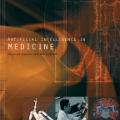Online abuse is becoming an increasingly prevalent issue in modern-day society, with 41 percent of Americans having experienced online harassment in some capacity in 2021. People who identify as women, in particular, can be subjected to a wide range of abusive behavior online, with gender-specific experiences cited broadly in recent literature across fields such as blogging, politics, and journalism. In response to this rise in abusive content, platforms have been found to largely employ "individualistic moderation" approaches, aiming to protect users from harmful content through the screening and management of singular interactions or accounts. Yet, previous work performed by the author of this paper has shown that in the cases of women in particular, these approaches can often be ineffective; failing to protect users from multi-dimensional abuse spanning prolonged time periods, different platforms, and varying interaction types. In recognition of its increasing complexity, platforms are beginning to outsource content moderation to users in a new and decentralized approach. The goal of this research is to examine the feasibility of using multidimensional abuse indicators in a Twitter-based moderation algorithm aiming to protect women from female-targeted online abuse. This research outlines three indicators of multidimensional abuse, explores how these indicators can be extracted as features from Twitter data, and proposes a technical framework for deploying an end-to-end moderation algorithm using these features.
翻译:2021年,41%的美国人以某种身份经历了在线骚扰。 特别是女性身份的人,在网上可能遭受广泛的虐待行为。 在最近博客、政治和新闻等领域的文献中广泛引用了与性别有关的经验。 为了应对这种滥用内容的增加,人们发现平台基本上采用“个人温和”方法,目的是通过筛选和管理单一互动或账户来保护用户免受有害内容的伤害。然而,本文作者以前的工作表明,在妇女方面,这些方法往往无效;未能保护用户免受跨越长期、不同平台和不同互动类型的多层面虐待;认识到其日益复杂,平台开始以新的分散方式将内容温和外包给用户。这项研究的目的是研究在基于推特的温和算法中使用多层面虐待指标的可行性,目的是保护妇女不受女性针对女性的在线虐待。本研究报告概述了三个多层面虐待指标,探索如何利用这些指标从Twitter中解析出一个节制的功能,并提议利用这些技术方略模型来利用这些技术方略的算法框架。




